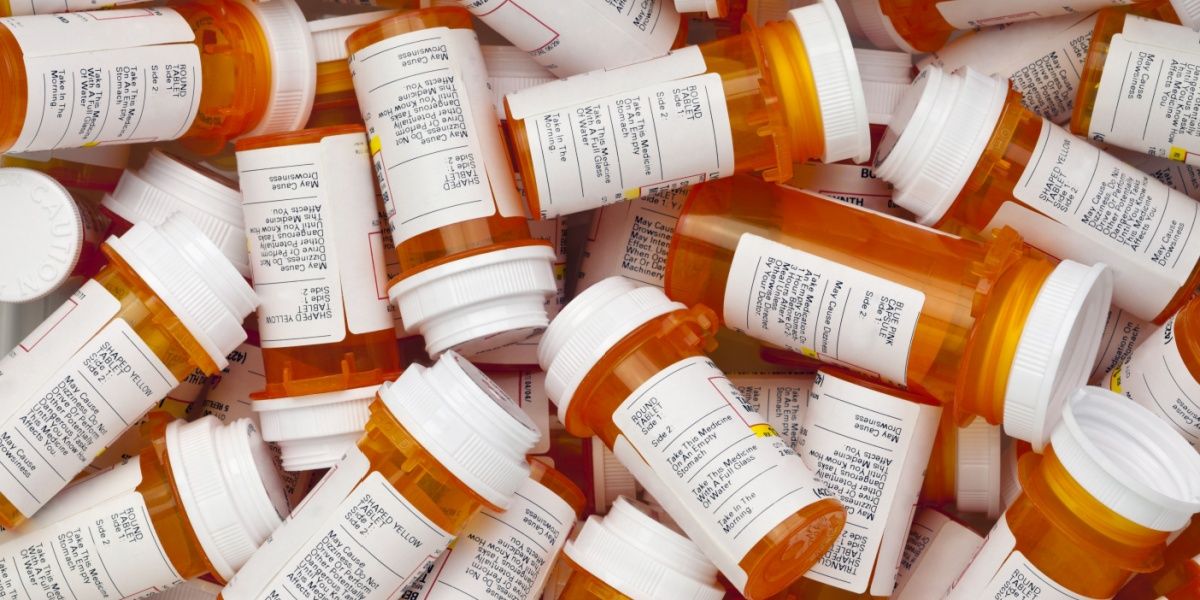Pregabalin and gabapentin are very similar medications prescribed to help treat epilepsy and neuropathic (nerve) pain.[1] Although they are relatively similar in both their structure and mechanism of action, there are some important differences to understand to help you and your doctor decide which drug is best for you.
- Pregabalin and gabapentin are very similar drugs that both reduce levels of excitatory neurotransmitters and can be used to relieve neuropathic pain
- Per milligram, pregabalin is approximately 6 times as effective as gabapentin, meaning that patients taking gabapentin have to take significantly higher doses to have the same effect
- Patients should discuss with their doctor or healthcare worker to decide which is the best drug to suit their needs. Special care should be taken for patients with a history of substance use disorder (SUD)

Pharmacological profiles: What are pregabalin and gabapentin?
Pregabalin and gabapentin are drugs known as gabapentinoids.[2] They have very similar chemical structures, which closely resemble the neurotransmitter GABA. Despite their similarity to GABA, neither pregabalin nor gabapentin interact directly with GABA receptors in the brain, although pregabalin can increase the availability of GABA in the CNS.[3]
Instead, they both bind to alpha-2-delta calcium-gated sodium channels, reducing how much calcium can enter the cell. This binding reduces the release of excitatory neurotransmitters and, therefore, these drugs act as central nervous system (CNS) depressants.[4]
Conditions treated
Both pregabalin and gabapentin are used to treat epileptic disorders and neuropathic pain, such as chronic nerve pain following a shingles infection (postherpetic neuralgia). Pregabalin is also FDA-approved to treat other forms of neuropathic pain, including those following diabetes or resulting from fibromyalgia. Gabapentin is approved for the treatment of restless leg syndrome.[5][6]
In Europe, pregabalin is licensed to treat generalized anxiety disorder (GAD). Doctors prescribe gabapentin and pregabalin for GAD in the US, but this is an off-label use. Other off-label uses of both drugs include insomnia, mood instability, and withdrawal from other drugs.[2]
Pregabalin vs. Gabapentin: Key differences
Despite their similarities, there are some significant differences between pregabalin and gabapentin.
Pharmacokinetics
Pregabalin is a more fast-acting medication than gabapentin. Peak plasma concentrations of pregabalin are reached within under an hour of taking the drug.[5] Gabapentin is absorbed more slowly, reaching peak concentration after around 3 hours.[6]
Evidence suggests that there is more variation in how well different people absorb and process gabapentin compared with pregabalin. This means that it is harder to predict how well people will respond to the drug or what dose they might need.[7]
This is partly because pregabalin is almost completely absorbed by the body, while some of the gabapentin in each dose isn’t properly absorbed. This means that it isn’t available to bind to the receptors in the brain. This is known as low bioavailability.
Importantly, pregabalin’s bioavailability remains relatively constant, meaning that a 50% increase in the dose leads to a 50% increase in the amount of the drug that is active. For gabapentin, bioavailability goes down at higher doses. This means that people who need high doses of gabapentin aren’t receiving as much benefit from the increasing amount of the drug.[7]
Dosage
Gabapentin is typically prescribed at significantly higher doses than pregabalin. For nerve pain, typical doses are 75-150mg of pregabalin twice daily (max 600mg per day).[8] This is compared with 300-600mg three times per day (max 1800mg per day) for gabapentin.[9]
Cost
Despite being used at lower doses, pregabalin is typically a more expensive drug than gabapentin, although this may depend on the specifics of your insurance provider.
Controlled substance status and licensing
Gabapentin has been used for longer than pregabalin. It was first licenced by the FDA in 1993, while pregabalin was only approved in 2004.[10][11]
Pregabalin is listed as a Schedule V controlled substance in the US, while gabapentin is not considered a controlled substance.
Efficacy comparison
Per milligram, pregabalin is significantly more effective than gabapentin at reducing pain.[12] This difference is reflected in the dose offered, however, meaning that the difference between these two drugs is harder to tell as a patient.
Pregabalin has been found to be superior in improving the quality of life for patients with chronic pain. This may be partly due to its ability to also improve anxiety, depression, and sleep disorders. It was also more cost-effective, despite being more expensive overall.[3]
Other studies found the opposite effect, however, suggesting that gabapentin may be more effective at treating pain or that there was no difference between the two drugs.[13][14]
Side effects profiles
Gabapentin and pregabalin have relatively similar side effects. Common side effects include:[3][8][9]
- Somnolence (drowziness)
- Dizziness
- Dry mouth
- Problems with your vision
- Increased appetite
- Nausea
- Vomiting
- Headaches
- Asthenia (weakness or loss of energy)
They can also lead to more serious side effects, which can be life-threatening. Angioedema is sudden, severe swelling of the face and neck, which can prevent breathing. This is a medical emergency, and you should call 911 if you or someone you are looking after develops this symptom. Another dangerous side effect is increased thoughts about suicide (suicidal ideation). Again, it’s important to seek help for this side effect.
Comparison of misuse and addiction potential
Neither gabapentin nor pregabalin are considered to pose high risks for misuse or addiction. Gabapentin is not listed as a controlled substance, while pregabalin is listed as a Schedule V drug, meaning that there is some risk of abuse, but it is considered in the lowest risk category.
Pregabalin misuse is significantly more common than for gabapentin.[4] It has been increasing as people use it at high doses to induce a euphoric ‘high’.[15] It is relatively common in prison settings, for example.[16] It is most commonly abused by people who already have substance use disorder (SUD) in conjunction with other drugs, which also increases the risk of serious complications.[2]
Both pregabalin and gabapentin can cause physical dependence and unpleasant withdrawal effects when you stop taking them. These are more likely to occur in people on high doses or those who have been taking the drug for a long time.[17]
Choosing between the two: Which medication is right for you?
This is a complicated decision and is best made in consultation with your doctor. If you have pre-existing SUD, you might decide to avoid pregabalin due to its increased risk of abuse. If you have concerns, you might want to discuss with your doctor whether there are any other classes of drugs that might be better to meet your needs.
It can be helpful to remember that it is possible to switch between gabapentin and pregabalin relatively easily.[1] If one medication doesn’t appear to be working for you, talk to your doctor about switching to an alternative.


-guide-detail.jpg?v=1722501965)
-guide-detail.jpg?v=1722503263)
